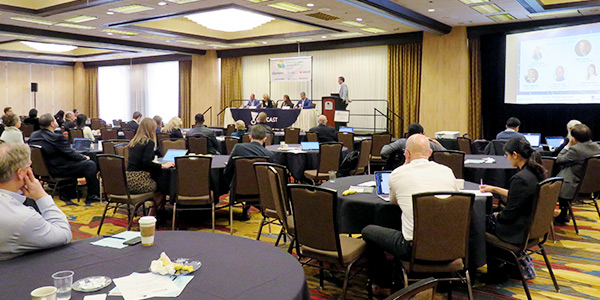By Hudson Sangree
SACRAMENTO, Calif. — The California Energy Commission is funding pilot programs for energy storage systems that go well beyond lithium-ion batteries, the audience at the Community Choice Energy Summit heard Friday.
The state accounts for 77% of planned large-scale storage nationwide, David Erne, a supervisor with the commission, told the audience.
He described the effort to develop utility-scale storage systems that don’t rely on lithium-ion batteries. Among the most sought-after systems are those with a minimum rating of 400 kW that could provide electricity for more than 10 hours at a time.
“We struggle with having a diversity of technology available,” Erne said.
Driven partly by the multiday outages caused by wildfires and public safety power shutoffs, the commission is seeking longer-duration storage that overcomes the run-time limits of lithium-ion batteries.
The commission is looking at technology that includes flywheel energy storage systems, flow batteries and non-lithium-ion Znyth batteries developed by Eos Energy Storage.
Proposals for some types of storage, primarily to deal with grid outages, are due at the end of February. The same solicitation includes smaller-scale storage systems to support Native American and low-income communities as well as lithium-ion batteries for residential construction.
A solicitation for projects to study the most useful locations and run times for longer-duration storage systems will be coming out soon, Erne said.
“We’re grappling with where [it will] provide the most value and what duration will provide the most value,” he said. “That one is not currently on the street, but it will be released imminently.”
Much of the research is funded by the commission’s Electric Program Investment Charge (EPIC) program, which provides approximately $130 million per year for research in science and technology to meet the state’s renewable energy and greenhouse gas reduction goals. (See EPIC Interest Growing Rapidly in California.)
The program is funded by a charge on ratepayer bills and administered by the commission and the state’s three big investor-owned utilities, Pacific Gas and Electric, Southern California Edison and San Diego Gas & Electric.
Erne said a related effort by the commission is resolving problems and costly delays connecting storage to the grid. It is working with the California Public Utilities Commission on rulemaking to ease interconnection rules and speed the process, “which I know is a significant problem for everyone who wants to put new technologies on the grid,” he said.
“It has become very challenging both from a time perspective but also from a cost perspective,” because developers find it hard to anticipate what a metered interconnection might ultimately cost, Erne said.





